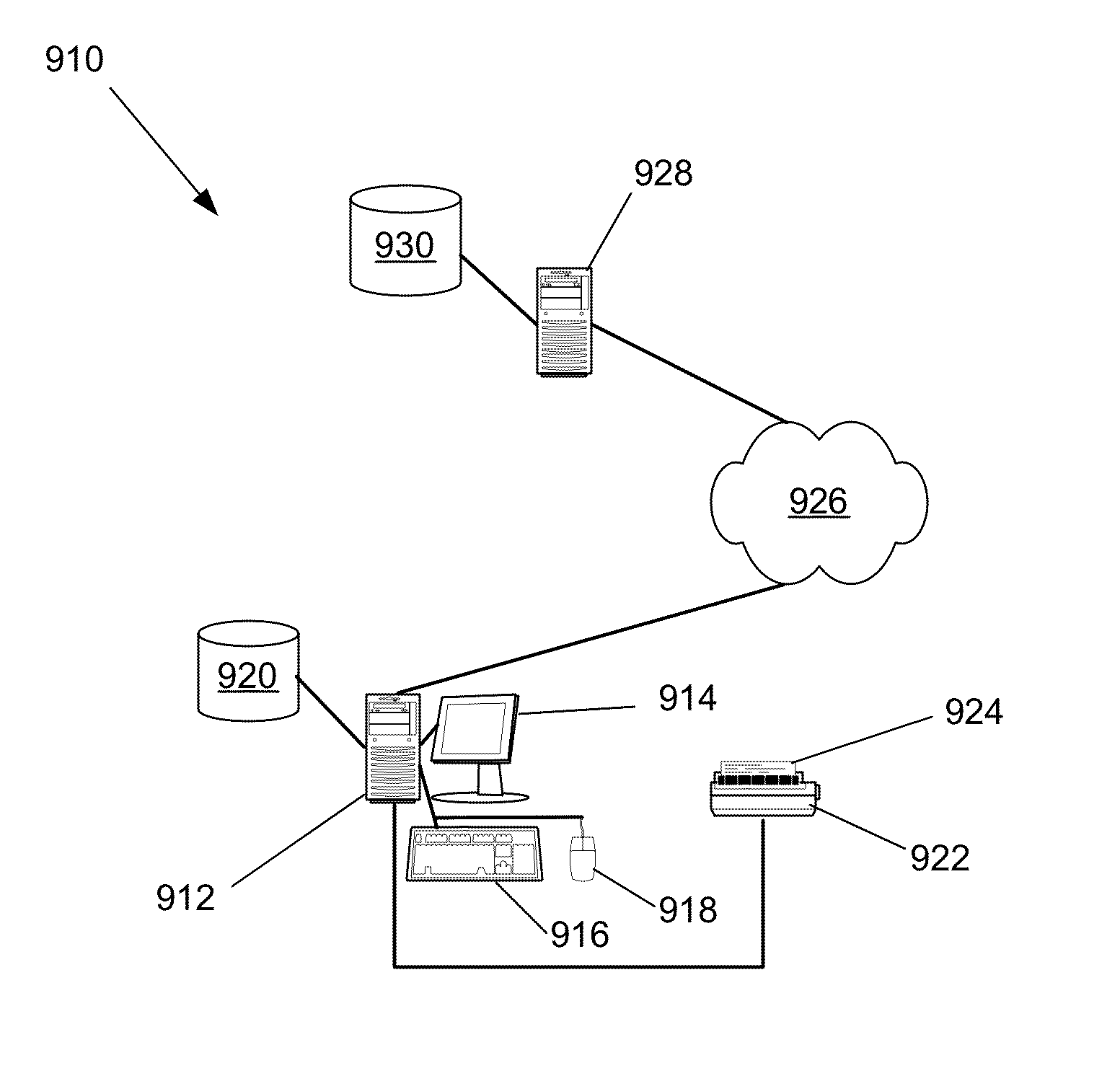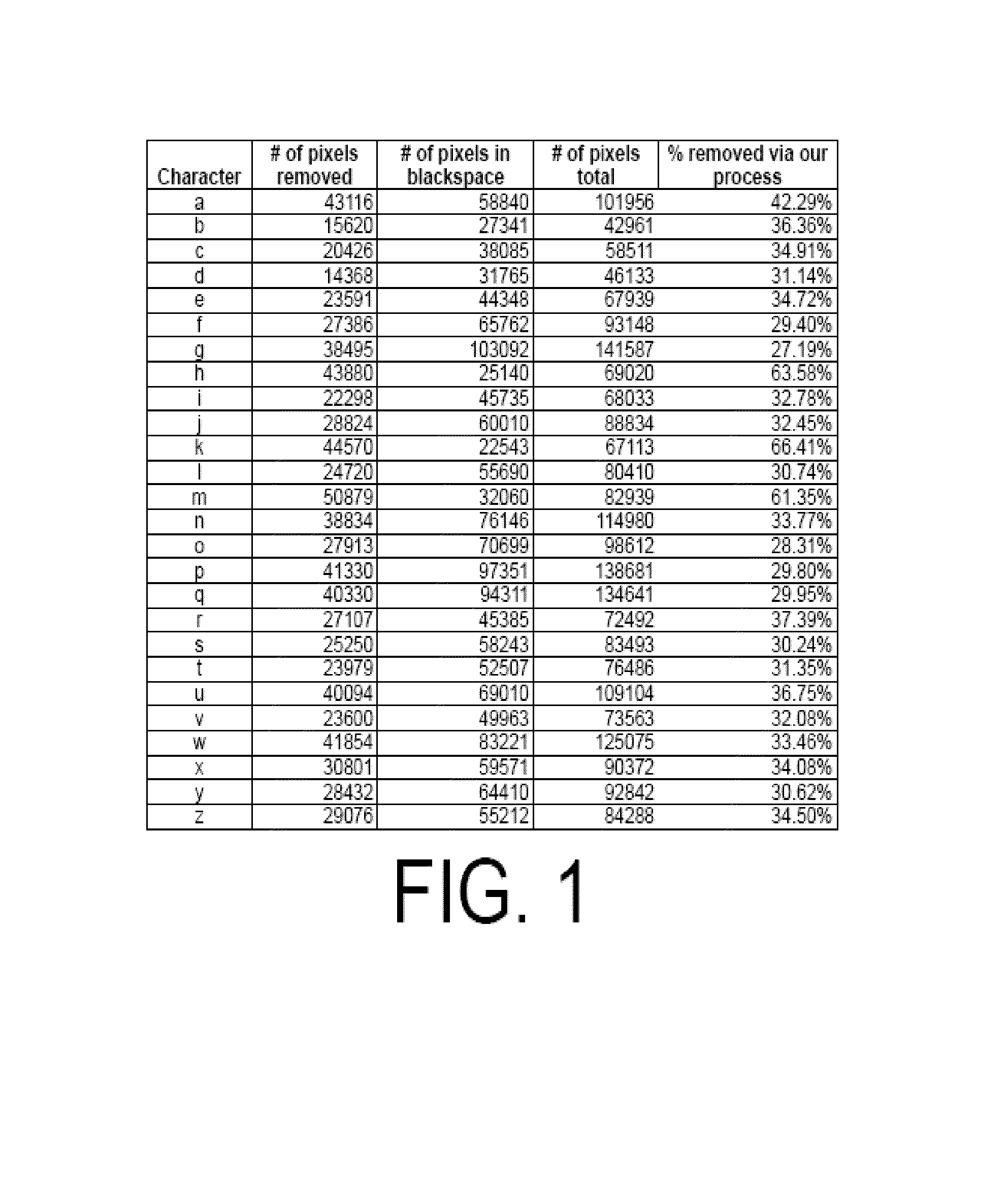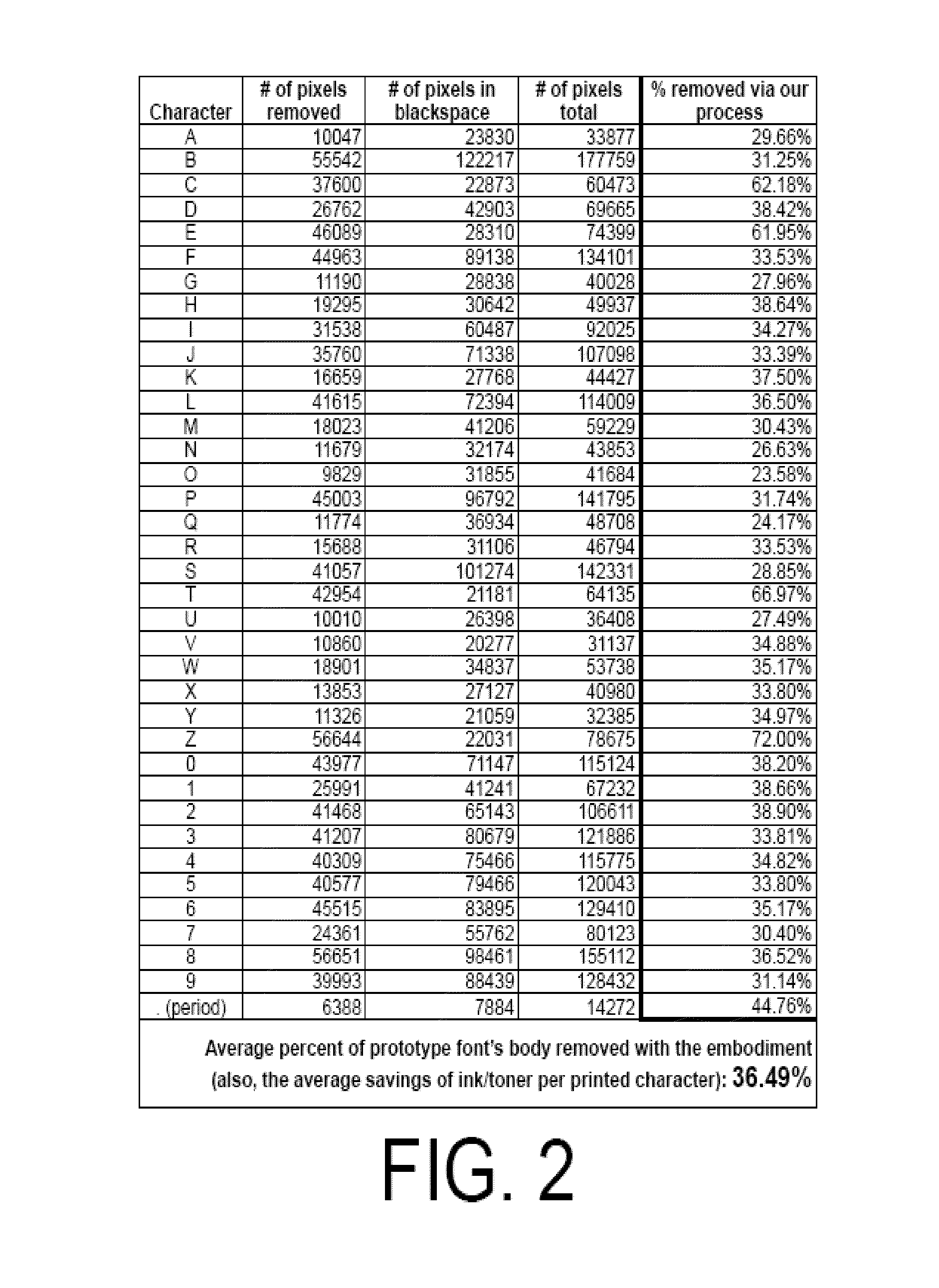Print compound conserving font production method
a production method and compound technology, applied in the field of computer fonts, can solve the problems of no product or process that utilizes print compound bleeding effects, no process formerly developed provides print compound saving benefits, etc., and achieves the effect of saving on print compound costs and improving font legibility
- Summary
- Abstract
- Description
- Claims
- Application Information
AI Technical Summary
Benefits of technology
Problems solved by technology
Method used
Image
Examples
Embodiment Construction
[0028]FIG. 1 shows glyph pixel counts and the resulting print compound conservation percent for 26 lower case characters of the font Georgia after modification in accordance with an embodiment of the present invention. The methodology for acquiring the pixel counts is discussed with reference to FIG. 6.
[0029]FIG. 2 shows glyph pixel counts and the resulting print compound conservation percent for 26 upper case characters, 10 numerals, one special character, and the average print compound savings per character of the font “Georgia” after modification in accordance with an embodiment of the present invention. The methodology for acquiring the pixel counts is discussed with reference to FIG. 6. The font after modification, according to the present invention, consumes 36.49% less printing compound compared to the font prior to modification.
[0030]FIG. 3 shows a sample font, glyph 310 from Ecofont™, a prior art reference discussed in the Background section. The font is at least 10% less e...
PUM
 Login to View More
Login to View More Abstract
Description
Claims
Application Information
 Login to View More
Login to View More - R&D
- Intellectual Property
- Life Sciences
- Materials
- Tech Scout
- Unparalleled Data Quality
- Higher Quality Content
- 60% Fewer Hallucinations
Browse by: Latest US Patents, China's latest patents, Technical Efficacy Thesaurus, Application Domain, Technology Topic, Popular Technical Reports.
© 2025 PatSnap. All rights reserved.Legal|Privacy policy|Modern Slavery Act Transparency Statement|Sitemap|About US| Contact US: help@patsnap.com



